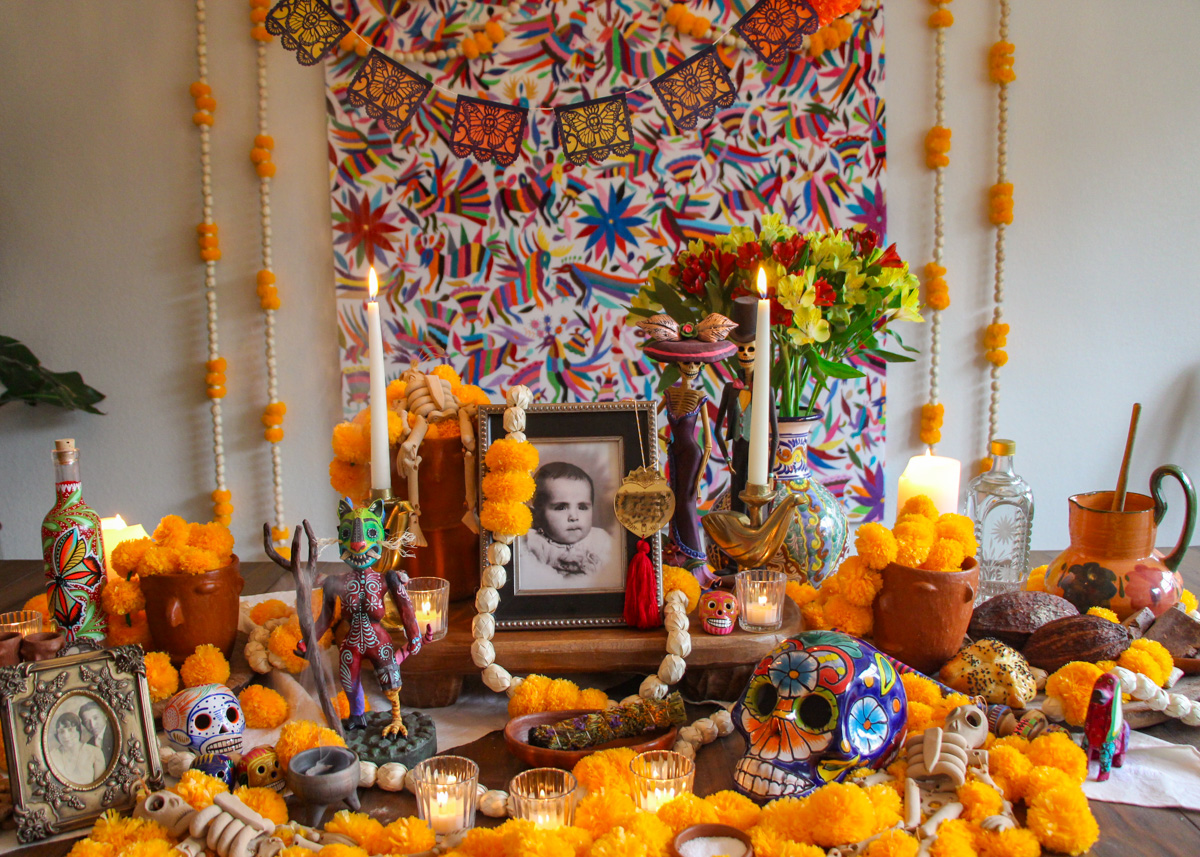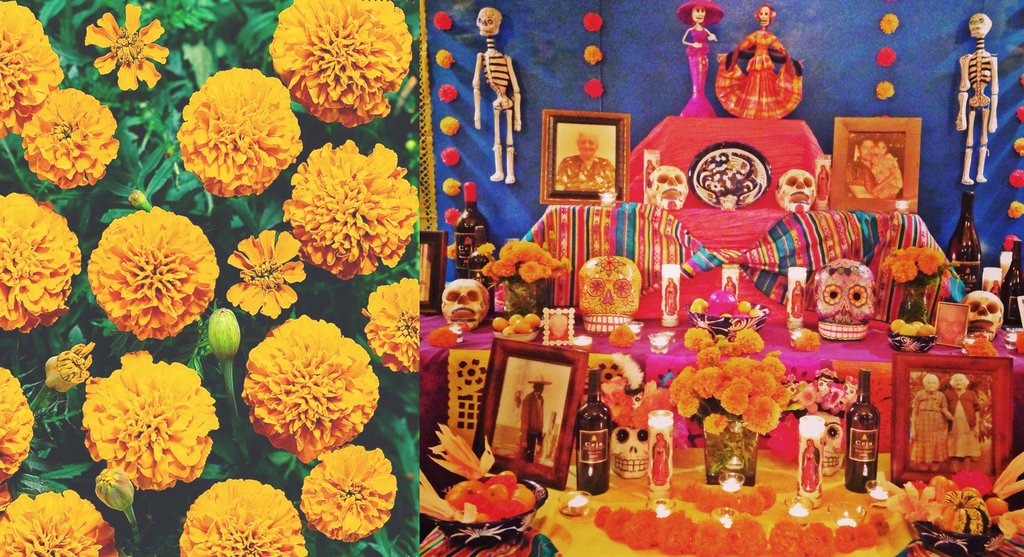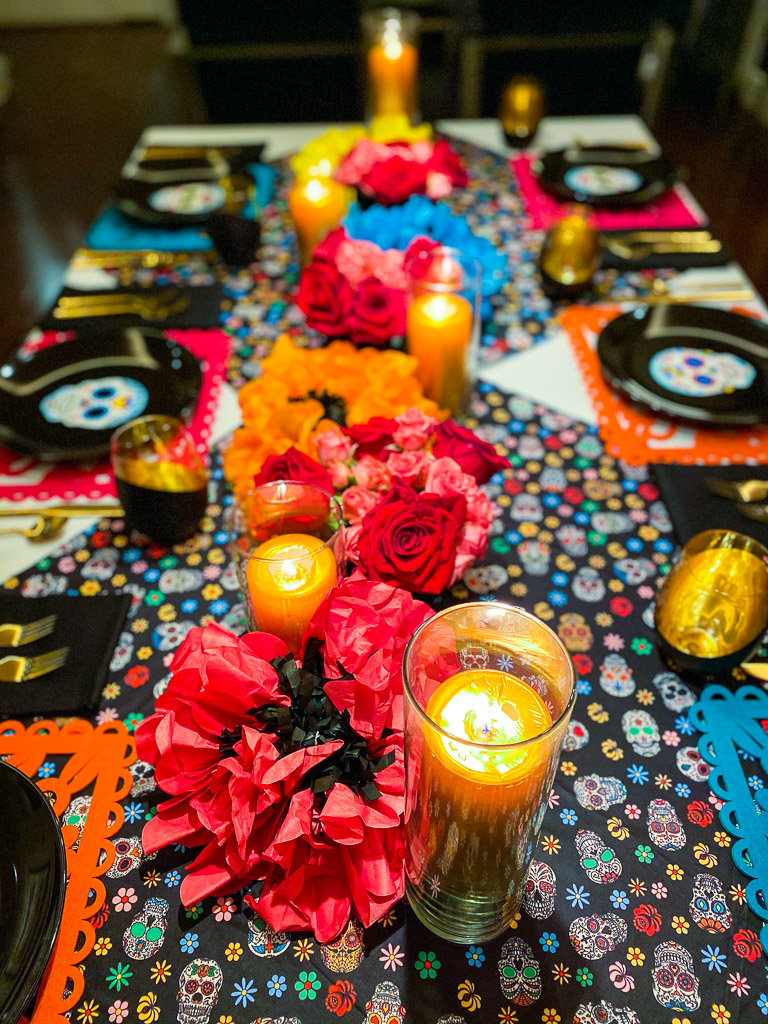The Day of the Dead is a beautiful celebration that takes place annually on November 1st and 2nd. It’s a time for families to honor and remember their deceased loved ones with colorful decorations and offerings. Having celebrated this occasion myself, I’ve come to appreciate the deep significance and artistry involved in the decorations. This article will explore the captivating decorations associated with the Day of the Dead, offering inspiration and practical tips for embracing this rich tradition.
Understanding the Significance of Day of the Dead Decorations
Day of the Dead, or Día de los Muertos, is rooted in Mexican culture, blending indigenous and Catholic practices. The decorations are not merely aesthetic choices; they hold deep symbolism and purpose.
The Altar: The Heart of the Celebration
The altar, or ofrenda, is central to the Day of the Dead celebration. It’s a sacred space where families create a welcoming environment for their loved ones’ spirits.
Key Elements of an Ofrenda
- Photos: Pictures of the deceased are typically displayed to invite their spirits back.
- Favorite Foods: Offerings include traditional foods like pan de muerto (bread of the dead) and sugar skulls.
- Marigolds: These bright orange flowers symbolize the sun and guide spirits to the altar.
- Incense: Copal incense is used to purify the space and elevate prayers.
- Candles: Lighted candles represent faith and hope.
Popular Decorations for Day of the Dead
Each decoration serves a unique purpose while contributing to the celebration’s overall atmosphere. Here, we will delve into some of the most popular decorations you can incorporate into your own observance.
1. Papel Picado: The Iconic Tissue Paper Banners
Papel picado, which translates to “perforated paper,” is a traditional decoration that adds color and texture to any celebration. These intricate banners are often handmade, featuring designs that represent death and the afterlife.
Creating Your Own Papel Picado
If you want to add a personal touch to your decorations, consider crafting your own papel picado. Here’s how:
- Materials: Tissue paper, scissors, and a craft knife.
- Design: Sketch various motifs, such as skulls, flowers, and hearts.
- Cut: Layer the tissue paper and carefully cut out your designs.
- Display: Hang the banners across the altar or around your home.
2. Sugar Skulls: Sweet Symbols of Life and Death
Colorful sugar skulls, or calaveras, are another essential decoration. They are often adorned with vibrant icing and represent the deceased, celebrating their life rather than mourning their loss.

DIY Sugar Skull Decorating
Creating sugar skulls can be a fun activity for families. Here’s a simple guide:
- Mix powdered sugar with meringue powder and water to create a moldable paste.
- Pack the mixture into skull-shaped molds and let them dry.
- Once dry, decorate with colorful icing, glitter, and beads.
3. Marigolds: The Flower of the Dead
Marigolds, known as cempasúchil in Spanish, are a key element in Day of the Dead decorations. Their vibrant colors are believed to attract the spirits of the deceased to the altar.

Where to Source Marigolds
You can find marigolds at local flower shops or supermarkets leading up to the holiday. You might also consider planting them in your garden to have a personal supply each year.
Table: A Comparison of Traditional and Modern Decorations
| Decoration Type | Traditional | Modern |
|---|---|---|
| Papel Picado | Handmade, intricate designs | Digital prints or plastic versions |
| Altar | Natural materials, family heirlooms | Store-bought decorations, themed |
| Skulls | Edible sugar skulls | Decorative ceramic or plastic skulls |
| Flowers | Fresh marigolds | Artificial flowers |

Creating an Authentic Day of the Dead Atmosphere
When decorating for the Day of the Dead, consider the overall atmosphere you want to achieve. Here are some suggestions to enhance the experience.
1. Incorporate Traditional Music
Playing traditional Mexican music can bring your decorations to life. Consider selections that reflect the cultural heritage of the celebration.

2. Use Scented Candles and Incense
The aroma of copal and sweet-smelling flowers will create a sensory experience that enhances the ambiance.
3. Encourage Family Participation
Invite family members to contribute their own decorations, whether it’s a favorite dish or a personal touch on the altar. This fosters a deeper connection to the tradition.

Pros and Cons of DIY Decorations vs. Store-Bought Decorations
Pros of DIY Decorations
- Personalized touches that reflect individual stories.
- Cost-effective; you can use materials you already have.
- Great bonding activity with family and friends.
Cons of DIY Decorations
- Time-consuming, especially for intricate designs.
- Potential for imperfect outcomes that may not meet expectations.
- Requires crafting skills that some may lack.
FAQs About Day of the Dead Decorations
What are the main colors used in Day of the Dead decorations?
The main colors are often vibrant hues like orange, purple, pink, and black, representing life, death, and the cycle of life.

Can I use artificial flowers for my altar?
Yes, while traditionalists prefer real marigolds, artificial flowers can be a practical alternative, especially if real flowers are not available.
How do I incorporate my family’s traditions in my decorations?
Consider using family heirlooms, favorite recipes, and photographs when creating your altar and decorations, making the celebration uniquely yours.

Conclusion: Embracing the Spirit of the Day of the Dead
As you prepare for the Day of the Dead, remember that the decorations serve not only as a tribute to those who have passed but also as a celebration of life. Whether you choose to craft your own decorations or use store-bought items, the spirit of this beautiful tradition lives in the hearts of those who gather to remember and celebrate. Embrace the colors, the flavors, and the stories; after all, every decoration has a meaning, and every story deserves to be told.